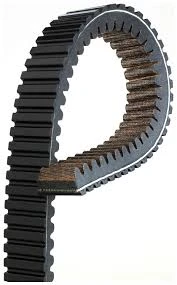- Arabic
- French
- Russian
- Spanish
- Portuguese
- Turkish
- Armenian
- English
- Albanian
- Amharic
- Azerbaijani
- Basque
- Belarusian
- Bengali
- Bosnian
- Bulgarian
- Catalan
- Cebuano
- Corsican
- Croatian
- Czech
- Danish
- Dutch
- Afrikaans
- Esperanto
- Estonian
- Finnish
- Frisian
- Galician
- Georgian
- German
- Greek
- Gujarati
- Haitian Creole
- hausa
- hawaiian
- Hebrew
- Hindi
- Miao
- Hungarian
- Icelandic
- igbo
- Indonesian
- irish
- Italian
- Japanese
- Javanese
- Kannada
- kazakh
- Khmer
- Rwandese
- Korean
- Kurdish
- Kyrgyz
- Lao
- Latin
- Latvian
- Lithuanian
- Luxembourgish
- Macedonian
- Malgashi
- Malay
- Malayalam
- Maltese
- Maori
- Marathi
- Mongolian
- Myanmar
- Nepali
- Norwegian
- Norwegian
- Occitan
- Pashto
- Persian
- Polish
- Punjabi
- Romanian
- Samoan
- Scottish Gaelic
- Serbian
- Sesotho
- Shona
- Sindhi
- Sinhala
- Slovak
- Slovenian
- Somali
- Sundanese
- Swahili
- Swedish
- Tagalog
- Tajik
- Tamil
- Tatar
- Telugu
- Thai
- Turkmen
- Ukrainian
- Urdu
- Uighur
- Uzbek
- Vietnamese
- Welsh
- Bantu
- Yiddish
- Yoruba
- Zulu
Lap . 25, 2024 23:51 Back to list
Automotive V Ribbed Belts for Enhanced Performance and Durability in Your Vehicle
Understanding Automotive V-Ribbed Belts Function, Features, and Benefits
Automotive V-ribbed belts, also known as serpentine belts, play a crucial role in the functionality of modern vehicles. These belts are designed to drive multiple peripheral devices attached to the engine, such as the alternator, power steering pump, water pump, air conditioning compressor, and others. Their innovative design enhances efficiency, making them an essential component in today’s automotive technology.
Design and Structure
The V-ribbed belt's unique design features a ribbed structure along the inside surface. This ribbing allows for better traction and grip as it wraps around the pulleys connected to various engine components. Unlike traditional flat belts, the V-ribbed design helps reduce slippage and improves power transmission efficiency. The belt's V shape ensures that it stays securely in place, even under significant load and varying engine speeds.
These belts are typically made from durable rubber compounds that resist degradation from heat, oil, and environmental factors. Advances in materials and manufacturing techniques have led to the development of belts that offer longer service life and improved performance.
Functions and Importance
The primary function of V-ribbed belts is to transfer power from the engine's crankshaft to other components
. A properly functioning belt is critical for the following reasons1. Reliable Operation of Accessories Many essential vehicle functions depend on the proper operation of these components. For instance, the alternator charges the battery, the power steering pump provides steering assistance, and the water pump ensures adequate cooling of the engine.
automotive v ribbed belt

2. Fuel Efficiency A well-maintained V-ribbed belt can enhance fuel efficiency by allowing engine components to operate smoothly. A worn or improperly functioning belt can lead to increased friction and decreased performance, ultimately resulting in higher fuel consumption.
3. Reduced Maintenance Costs Although V-ribbed belts are designed for longevity, they do require periodic inspection and replacement. Early detection of wear can prevent more severe damage to engine components and reduce overall maintenance costs.
Signs of Wear and Replacement
It is essential for vehicle owners to understand the signs of wear on V-ribbed belts. Common indicators include
- Cracking or Fraying Inspecting the surface of the belt for cracks or frays can provide an early warning. These defects often signal that the belt is nearing the end of its useful life. - Squeaking or Squealing Noises Unusual noises coming from the engine compartment when the vehicle is running can indicate a slipping or worn belt. - Loss of Accessory Function If any accessory driven by the belt begins to malfunction, this could also be a sign of a failing V-ribbed belt.
Typically, manufacturers recommend replacing the V-ribbed belt every 60,000 to 100,000 miles, but it is crucial to consult the vehicle's owner manual for specific guidance.
Conclusion
In summary, the V-ribbed belt is an indispensable component of modern automotive systems. Its unique design, which allows for the efficient transfer of power to multiple accessories, enhances vehicle performance and reliability. Understanding the importance of this belt, recognizing the signs of wear, and adhering to maintenance schedules can help ensure that a vehicle remains in optimal condition, leading to improved performance and lower long-term costs. By prioritizing the health of the V-ribbed belt, drivers can enjoy a smoother and more dependable driving experience.
-
Korean Auto Parts Timing Belt 24312-37500 For Hyundai/Kia
NewsMar.07,2025
-
7PK2300 90916-T2024 RIBBED BELT POLY V BELT PK BELT
NewsMar.07,2025
-
Chinese Auto Belt Factory 310-2M-22 For BMW/Mercedes-Benz
NewsMar.07,2025
-
Chinese Auto Belt Factory 310-2M-22 For BMW/Mercedes-Benz
NewsMar.07,2025
-
90916-02660 PK Belt 6PK1680 For Toyota
NewsMar.07,2025
-
drive belt serpentine belt
NewsMar.07,2025

